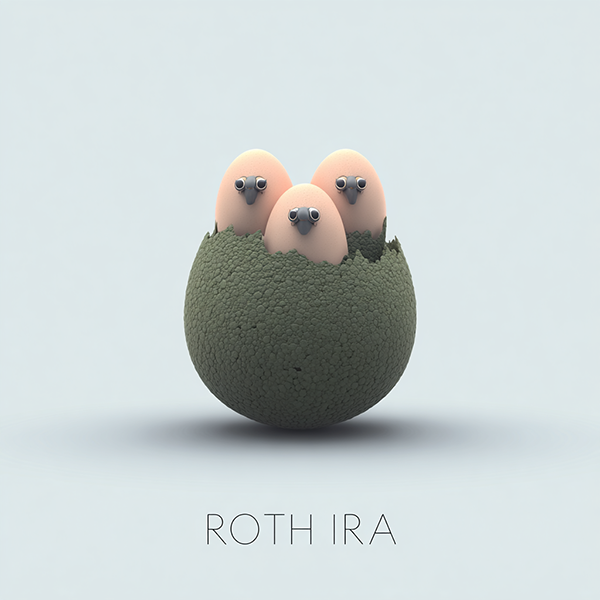
Since its introduction in the late 1990s, the Roth IRA has become a popular way for individuals to build a secure financial future. With a Roth IRA, you contribute money that’s already been taxed, and in return, your investments can grow—and be withdrawn in retirement—completely tax-free, provided certain conditions are met. Because today’s tax rates remain relatively low, many people see the Roth IRA as a strategic way to shield future retirement income from possible tax hikes. This flexibility makes the Roth IRA a valuable tool for long-term wealth building. Before making any investment decision, consult with a financial or tax advisor, and consider your individual circumstances.
Access and Contribution Limits
If you’re a high earner, you might run into annual income limits when trying to contribute directly to a Roth IRA. For 2025, the cutoff is $165,000 for individuals and $246,000 for couples filing jointly. However, earning above these limits does not necessarily prevent you from benefiting from a Roth IRA. Alternative strategies, such as conversions from other retirement accounts, may allow you to take advantage of the Roth’s tax-free growth potential. These actions have tax implications and may not be suitable for everyone. Please consult a qualified tax advisor before proceeding.
Strategic Conversions: Timing Matters
One potential strategy is to convert money from a traditional IRA to a Roth IRA—especially in years when your income is lower or the market is down. By paying taxes now, possibly at a lower rate, you may protect your future investment gains from being taxed again. However, the amount you convert adds to your taxable income for that year, which could affect your tax bracket. Consult a qualified tax professional to assess the timing, amount, and suitability of this strategy for your specific situation.
If you have a mix of pre-tax and after-tax contributions in your account, IRS rules require that withdrawals include a proportionate share of each. This may complicate your tax situation. Many investment companies offer online calculators to help estimate the impact, but you should consult a tax professional regarding your particular circumstances.
Remember the five-year rule: when you convert funds to a Roth IRA, those dollars generally must remain in the account for at least five years before earnings can be withdrawn tax-free, even if you’re old enough to avoid penalties. This rule is subject to change and depends on individual circumstances. Be sure to check with a tax professional for the most current guidance.
The "Backdoor" Technique
If your income is too high for direct Roth IRA contributions, you may have options. One is the “backdoor” Roth strategy: make after-tax contributions to a traditional IRA, then convert that money to a Roth IRA. You must file IRS Form 8606 to properly document the transaction. The rules around these strategies can be complex and are subject to change. Always consult a tax professional before implementing.
Exploring 401(k) Opportunities
Certain employer retirement plans allow after-tax contributions to be converted to a Roth account—a move sometimes called the “mega-backdoor” Roth strategy. These plans may have higher contribution limits, but not all plans offer this feature. Rules vary widely, so check with your employer or plan administrator and consult a financial professional before proceeding.
Advanced Investing: Self-Directed Accounts
For investors seeking alternative assets, a self-directed IRA permits investments beyond stocks and bonds, such as private equity or real estate. However, self-directed IRAs are subject to complex IRS rules, require specialized custodians, and can carry significant penalties for non-compliance. Contribution limits are the same as conventional IRAs. Consult a qualified financial or tax advisor to determine if a self-directed IRA is appropriate for you.
While some investors have experienced strong results with self-directed IRAs, these accounts were intended for diversified, long-term savings—not for speculative or aggressive investment strategies. You should consult a qualified adviser to determine whether this approach aligns with your overall financial goals and risk tolerance.
In summary, maximizing a Roth IRA requires careful planning, a thorough understanding of IRS rules, and awareness of available strategies for higher income earners. Work with qualified professionals and keep accurate documentation to help ensure compliance and maximize potential tax-free retirement income.
Disclosure:
This article is intended for informational purposes and does not constitute financial or legal advice. Readers should consult a qualified professional regarding tax strategies and applicable regulations. The information provided herein is based on publicly available sources deemed reliable as of the publication date; however, accuracy and completeness are not guaranteed.
Referenced sources are cited as educational resources but do not endorse this article. All investments carry risks, including potential loss of principal. This material is not intended to serve as personalized tax advice since the availability and effectiveness of any strategy depend upon individual facts and circumstances. Please consult your legal or tax professional regarding your specific situation when determining if any strategies are right for you.
This material is not intended to serve as personalized tax, legal, or investment advice, as the availability and effectiveness of any strategy depend on your individual facts and circumstances. Duncan Williams Asset Management is not a legal or accounting firm. Please consult with your legal or tax professional regarding your specific tax situation to determine if any of the mentioned strategies are suitable for you.
Sources
- https://www.bloomberg.com/explainers/roth-ira-guide-maximize-retirement-wealth?utm_campaign=202508_BATC_reg_eng_Roth_IRA_reg_eng_roth_ira_aug2025&utm_term=19206146&utm_source=subs-email&utm_medium=email&utm_content=14735525#footer-ref-footnote-1
- https://tobermanbecker.com/about-craig-toberman/
- https://www.irs.gov/retirement-plans/rollovers-of-after-tax-contributions-in-retirement-plans
- https://www.fidelity.com/calculators-tools/roth-conversion-calculator/
- https://www.schwab.com/ira/ira-calculators/roth-ira-conversion
- https://www.financialeducatorscouncil.org/melissa-caro/
- https://myretirementnetwork.com/
- https://www.deardenfinancial.com/
- https://www.fidelity.com/learning-center/personal-finance/mega-backdoor-roth
- https://www.propublica.org/article/lord-of-the-roths-how-tech-mogul-peter-thiel-turned-a-retirement-account-for-the-middle-class-into-a-5-billion-dollar-tax-free-piggy-bank
- https://www.bloomberg.com/opinion/articles/2021-07-08/peter-thiel-used-a-roth-ira-to-avoid-taxes-but-you-shouldn-t-try
- https://www.investor.gov/introduction-investing/general-resources/news-alerts/alerts-bulletins/investor-alerts/investor-14












